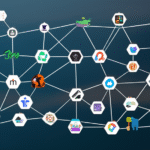In today’s rapidly advancing technological landscape, leveraging information technology is paramount in effectively monitoring and preparing for severe weather events.
The Importance of Severe Weather Monitoring
Severe weather can have disastrous impacts on communities, economies, and environments. Effective monitoring and early warning systems are crucial in providing timely alerts to mitigate potential damage and ensure public safety.
The Role of Technology in Weather Monitoring
Information technology plays a vital role in enhancing the capabilities of meteorological organizations. From advanced forecasting models to communication technologies, IT enables more accurate predictions and faster response times. Key technologies include:
- Radar Systems: High-resolution weather radar allows for real-time tracking of severe storms, helping meteorologists understand storm dynamics.
- Satellite Imaging: Satellites provide crucial data on cloud cover, temperature, and humidity that are essential for weather forecasting.
- Data Analytics: Big data analytics enable the processing of vast amounts of weather data to identify patterns and improve forecasting accuracy.
Early Warning Systems: Keeping Communities Informed
Early warning systems leverage technology to communicate alerts about severe weather conditions. These systems can send notifications through various channels, including:
- Mobile Alerts: SMS and app notifications ensure citizens receive timely alerts on their mobile devices.
- Sirens and Broadcasts: Local emergency services use sirens and radio broadcasts to warn communities in real-time.
- Social Media: Platforms like Twitter and Facebook serve as immediate channels for disseminating information and updates to the public.
Challenges in Severe Weather Monitoring
While technology has greatly improved severe weather monitoring, challenges still exist, including:
- Data Overload: Managing and interpreting vast amounts of data can be overwhelming for meteorologists and organizations.
- Infrastructure Dependability: Many regions lack the necessary infrastructure to support advanced weather monitoring technologies.
- Public Engagement: Ensuring that the public understands and acts on warnings is critical yet often difficult.
Future of Weather Monitoring and Technology
The future of severe weather monitoring promises advancements in AI and machine learning, which can enhance predictive analytics and improve the accuracy of forecasts. Moreover, community-based initiatives aimed at educating the public about weather alerts will also play a significant role in safety and preparedness.
Related Articles You May Like
Conclusion
Leveraging information technology for severe weather monitoring is essential for proactive disaster management and community safety. By integrating advanced technologies and enhancing public awareness, we can significantly reduce the impacts of severe weather events.








